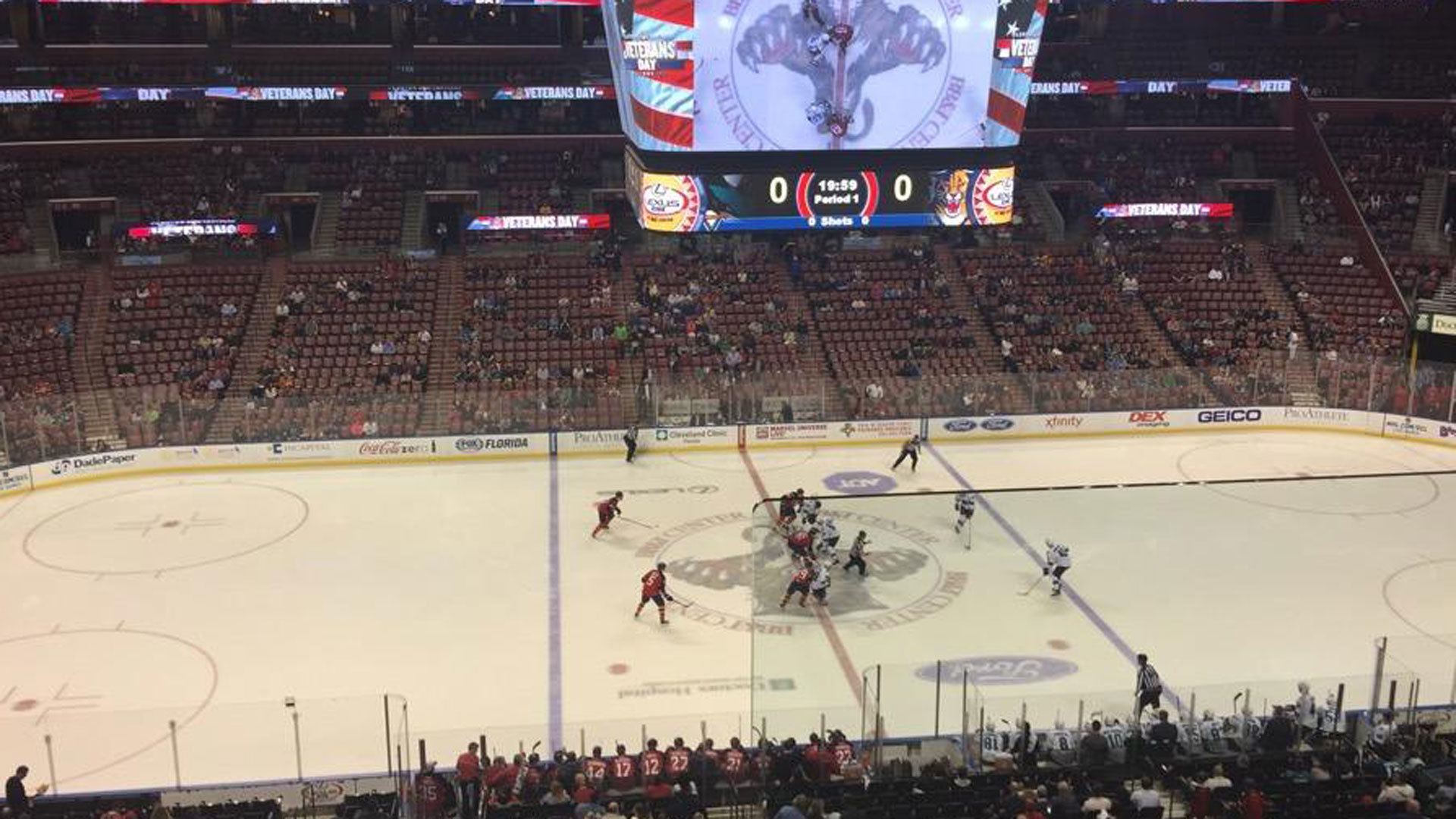Below is an in-depth summary of the most notable occurrences that have happened under the watch of Gary Bettman and his administration during his run as commissioner, which began in February of 1993.
1993/94 Season
1. NHL expands with the Florida Panthers (Miami) and the Mighty Ducks of Anaheim (Southern California)
I would call Anaheim a non-traditional hockey market. In the case of Miami, the NHL essentially expanded into the Caribbean in terms of climate. Miami is a short boat-ride from the Bahamas to put the geographical location into context.
2. League permits the Minnesota North Stars to relocate to Dallas Texas.
This move saw one of the most passionate US hockey markets vacated in favor of the deep south. Dallas is a non-traditional hockey market.
In fairness, it seems like in this case, the area known as the North Texas Metroplex may have been a too-big-to-fail situation, and the Dallas Stars have worked out pretty well. Having said this, the Stars have performed very well and consistently in Dallas, and it will be interesting to see how this fanbase holds up if the team goes through a decade of losing.
1994/95 Season
Half of the season was lost due to a player-lockout, carried out by the owners and the NHL front office.
1995/96 Season
The Quebec Nordiques relocate to Denver, Colorado.
This move sees a traditional hockey market move to another solid hockey market. Denver has a winter climate and hockey interest has always been fairly strong. It’s a shame Quebec lost the Nordiques, but Denver is a good place for an NHL team.
1996/97 Season
The Winnipeg Jets relocate to Phoenix, Arizona.
This move sees a great hockey market vacated in order to bring hockey to the desert. A city that had clear red flags on its ability to support professional hockey long-term; and years later ended up creating a 5-6 year headache for the NHL, as well as costing the League hundreds of millions of dollars. (More on the Phoenix Coyotes later)
1997/98 Season
The Hartford Whalers are relocated to Greensboro, North Carolina.
This move sees a fairly solid hockey market, albeit a small one, relocate to a truly non-hockey market- and furthermore, to a place where college sports are king and professional sports aren’t nearly as relevant in general. In the American Southeast, the general interest in pro sports is far less than elsewhere on the continent. College sports are king in the Carolinas.
This was a completely bizarre move to go to a stadium in Greensboro that was hardly even conducive for hockey, 2 full years before the permanent arena in Raleigh was to be ready. Greensboro is about a 1.5 hour drive for fans in Raleigh, if they wanted to go watch their new Hurricanes in Greensboro. Predictably, these first two years in Carolina were a disaster for the former Whalers.
I remember hearing stories of the Hurricanes handing out rule books to their fans- helping them understand basics like ‘icing’ and ‘off-sides’. This move was a head scratcher at very best. In recent news, (and unsurprising news), the Hurricanes franchise is in trouble in Raleigh, and were a candidate to be relocated to Las Vegas prior to the expansion announcement.
1998/99 Season
The league expands with the Nashville Predators.
Nashville, Tennessee- a non-hockey market in the Southeastern USA. This had red flags all over it, and less than 10 years into their history the Predators were in serious trouble. Back in 2007, the Predators were almost moved to Hamilton, Ontario before the sale of the team to Jim Ballsillie was blocked. This move was all but completed, but the NHL stepped in and cooked up a bunch of reasons why they didn’t want Ballsillie to get the team. Most hockey insiders believe because the NHL didn’t want another team in Canada. The Predators have been good on-the-ice since 2007, so that has helped; but I wonder what will happen when this franchise goes through a 5-7 year stretch of losing.
1999/00 Season
1. The League expands to Atlanta with the Thrashers.
This was a reckless move. It’s truly a non-hockey market. Atlanta is known as one of, if the not the worst fanbase cities on the continent in terms of supporting their professional teams. According to 2 of my favorite sports personalities, Wilbon and Kornheiser of PTI, it is actually the worst.
The Atlanta Flames had been very competitive on-ice during their 8 seasons in Atlanta in the 1970s, and they still ended up relocating to Calgary in 1980.
As it turned out the Thrashers were abysmal in terms of attendance and left for Winnipeg after 11 seasons in Georgia.
2. The NHL changes its individual-game results to include OTL, but do not account for OTW.
As I wrote about at length in the article ‘Explaining the Fundamental Flaw in NHL’s Standings’, the NHL made a complete mess of its teams’ records and subsequently the League standings in 1999- and has not since corrected the flaws.
“Beginning with the introduction of the OTL result in 1999/00, the accurate correlation between NHL Points and winning percentage was undone. No longer would the Points also be an accurate reflection of the teams’ winning percentages.”
2000/01 Season
The NHL expands to Columbus, Ohio and to the Twin Cities of Minnesota.
The expansion to Minneapolis/ St. Paul was the righting of a wrong that occurred when the North Stars left in 1993. The return of hockey to the “Hockey State” has worked out well, and the Wild have one of the most passionate fanbases in the League.
Columbus should be considered a non-traditional hockey market in a state which, despite being fairly northern, does not have a history of being a hockey region. The Blue Jackets have struggled mightily on the ice. They seem to be holding up pretty well considering the team has never won a playoff series and has only been to the playoffs twice. Maybe this franchise will work out long-term, but hockey in Columbus still has a lot to prove.
2004/05 Season
A full season Cancelled- Stanley Cup not awarded.
This monumental failure should have been the breaking point. A lockout by the owners and the NHL caused the cancelation of an entire season. I’m not sure how or why Gary Bettman kept his job through this. Oh wait- its because he was just doing what the owners wanted.
This was criminally irresponsible of the NHL leadership. Heads should have rolled. Much of the financial problems the NHL was having at the time was due to how many struggling and weak franchises they had; you know, the ones they had placed in non-traditional hockey markets. Fans were the victims of this lockout but make no mistake that the expansion and relocation decisions of the previous 12-13 years were a primary root cause of the financial problems which lead to this lost season.
The Phoenix Coyotes Disaster (2008-2013)
Officially the NHL owned the Coyotes from 2009-2013, but there’s wide speculation that they were secretly in control of the franchise since the fall of 2008. Jim Ballsillie of Research in Motion (BlackBerry), put in a bid to buy the team and relocate it to Hamilton, Ontario, however the NHL again blocked his attempt by placing the ONLY rival bid for the team.
In order to beat out Jim Ballsillie’s bid for the franchise they had to buy the team from owner Jerry Moyes and assume all of his debts, which were in the hundreds of millions! The NHL incurred massive losses over the 4-5 year period of owning the Coyotes.
Why would the NHL damage its bottom line by hundreds of millions of dollars, create itself a massive set of headaches lasting many years, and try and force a hockey team to stay in a desert-city, versus letting Mr. Ballsillie significantly overpay for a franchise (which he was willing to do), and move it to a place with a rabid hockey fanbase that could clearly support a team?
This perplexes me and I am still waiting for an answer that makes any sense.
2011/12 Season
The Atlanta Thrashers relocate to Winnipeg, Manitoba and become the new version of the Winnipeg Jets.
A truly non-hockey market relocates to a great hockey market, albeit a small market. However this was also a head-scrather.
The NHL knew that Winnipeg was ready for a team, yet they weren’t interested in allowing the REAL Winnipeg Jets (the Phoenix Coyotes) to return there, when there was keen interest to do so during the time the NHL owned the Coyotes. As stated above, the NHL put up a gargantuan fight to keep the Coyotes in Phoenix/Glendale.
Yet in this case, the NHL handled the situation in the complete opposite way. The Thrashers went from being a non-story to relocating in an incredibly short time.
Why didn’t the NHL fight to keep the Thrashers in Atlanta, when the situation seemed very similar to the Phoenix/Glendale case?
I have a feeling there’s more to this story than we are aware of. The League handled these two troubled franchises in polar-opposite ways.
2012/13 Season
Yet another Lockout of the players, with half of the season lost.
Completely shameful and inexcusable for this to happen after the 2004/05 disaster. Upon being named commissioner in 1993, one of Gary Bettman’s most public and important mandates was to prevent labor-disputes and lost NHL games. This was now the 3rd lockout he had overseen.
How can the NHL owners justify allowing him to keep his job after this failure?
Summer 2016
The NHL announces that in 2017 they will expand to Las Vegas, Nevada.
This is not just a ‘non-traditional hockey market’, it’s a non-hockey market. It’s an adult’s playground in the middle of the desert. There is no winter climate at any time of the year. Why go to Las Vegas when there are literally 5 other places that make more sense. (3 or 4 options in Southern Ontario, Quebec City, Seattle, or Kansas City.)

